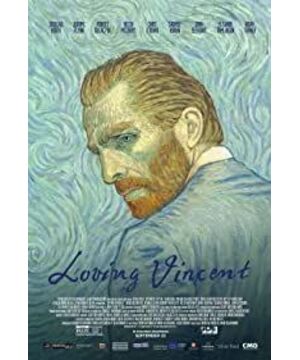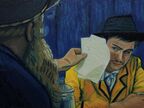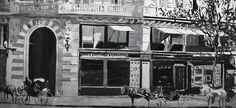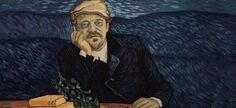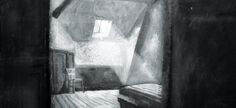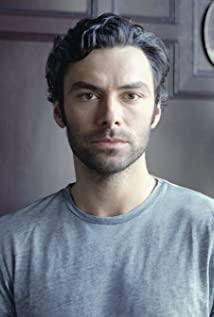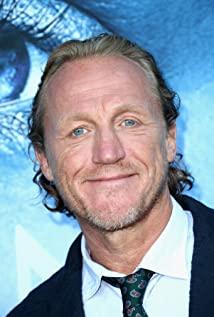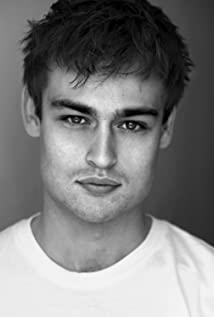I struggled for a long time between Samsung and Four-Star, and finally imposed strict demands on it based on deep feelings, and it was Samsung.
The concept is great, the degree of completion is 3.8 stars, and the story is two stars. Under the strong emotional resonance of the great concept, I have seen too many films that are technically inadequate:
1. It can be clearly seen that the film is produced by three techniques: hand-painted oil painting, real shooting plus post oil painting effect processing, and a combination of the first two (the background is real oil painting, and the foreground is real shot keying of characters plus oil painting effect processing). This technique is not a problem at first, it is not lazy, but because the differences in the three styles are too obvious, it leads to a strong sense of separation in the movie, as detailed in the following sections.
2. The oil painting imitates the original part, the brushstrokes are bold and unrestrained, the god restores the work of the Brahma Plateau, the picture is dazzling when it moves, and it is basically all landscape paintings, and it is also the most used shot of the trailer. When the characters and narration appear, the painting style changes. The brushstrokes are much smaller and the halo change style is completely different. It can be seen that the actors' performance and the "oil painting effect filter" have both visual perception. This can be seen in all black and white and color narrative pictures, especially black and white pictures. The third technique mentioned in Article 1 clearly shows that the background comes from real hand-painted images and the foreground figures come from real shots, which is very dramatic. Human beings are very keen to observe their own facial expressions and body muscles. My friends who watched the movie and I recognized the actors we knew from the "oil-painting effect filter". During the movie watching, we kept saying "This look is Who played so and so".
3. Besides these three styles of production, there are several common shortcomings. Based on the overall processing of the film, it is not difficult to see that the Van Gogh style of oil painting expressed by the main creative is throughout the film, not a combination of oil painting, charcoal painting, or other paintings, nor a combination of oil painting and real shooting. Then, under this extremely high concept and great tribute, the artistic treatment of oil painting style is not delicate and rigorous enough. I have seen inconsistent brushstrokes, too random and no standard brushstroke movement rules, the most eye-catching light-point flashing movement is used too casually, and even seen many times that there is a circle of oil paintings around the background of the characters. Traces of treatment. Often in the same lighting scene, the brushstrokes on characters or objects move sometimes and without, sometimes cold and warm, sometimes thick and thin, sometimes moving and sometimes static, and keying traces are sometimes hidden. There are many beautiful changes. It is caused by the movement of lighting or the dynamics of the characters, but purely "moving for the sake of movement". In the eyes of an occupational disease of a visual worker, it is simply unbearable chaos! This is very different from the greatness of Van Gogh's work—the dazzling abstraction contains real concreteness.
4. Limited to the concept of converting real shooting into oil painting texture, in order to achieve the effect of "the whole frame is like a painting", the scenes in the narrative picture are very limited, which makes the 90-minute narrative seem monotonous and weak. Especially in this story, it can be seen that there are appeals for mystery, investigation, and suspense. Whenever a character appeared, it was originally a dialogue to promote the plot, but there were only two or three scenes, which made the audience very tired and boring to watch. The second half of the film is particularly obvious. The character dialogue becomes a melodramatic three-position as soon as the scenes appear, but the dialogue itself is not wonderful enough to catch people, so that the audience is driven by the film and expects to find the truth. Become drowsy.
5. The "sense of fatigue" in the above item has been mentioned in many short comments. In fact, the weakness of the narrative, technical flaws, and filter effects are not a stumbling block to a great artistic concept, but it is the completeness of a complete movie. Just imagine, if the creator boldly gave up the big ambitions and small calculations of the "complete movie" and made it into a short film within 30 minutes, how amazing the work we would have seen! It condenses the impact of real oil paintings, reduces the fragmentation and chattering of the filter-like effect, and the narrative is compact, if you want to say it, and the ending is open! I'm very excited just thinking about it.
6. The procrastination of the plot and the unreasonable use of suspenseful techniques have been mentioned in many film reviews. I am not professional enough and will not repeat them. When combined into the previous one, everything will be solved.
7. Standing at the height of Van Gogh's works, he does not need the mercy and remembrance of the world. When later generations pay tribute to him, the boldness of creativity and the subversion of expression techniques are far more precious and "Van Gogh" than the current imitated style of painting and the plot of the curious baby visiting and investigating the case.
Pretending to write so much strictly, I actually shed tears when Vincent sounded at the end of the film. As a film lover with a background in fine art, my emotional sensitivity and abundance made me understand Van Gogh deeply and I am willing to take art works seriously.
View more about Loving Vincent reviews


